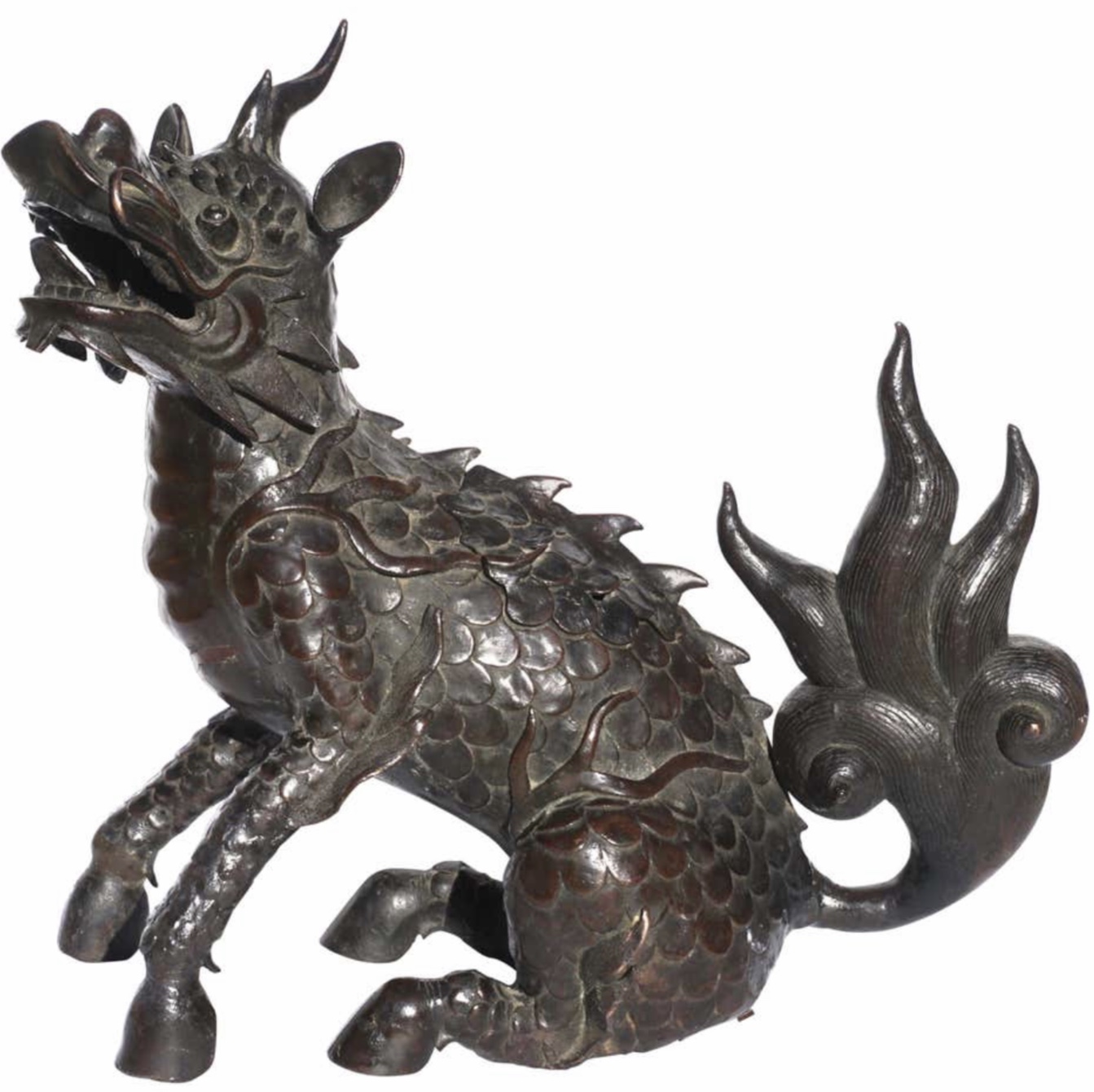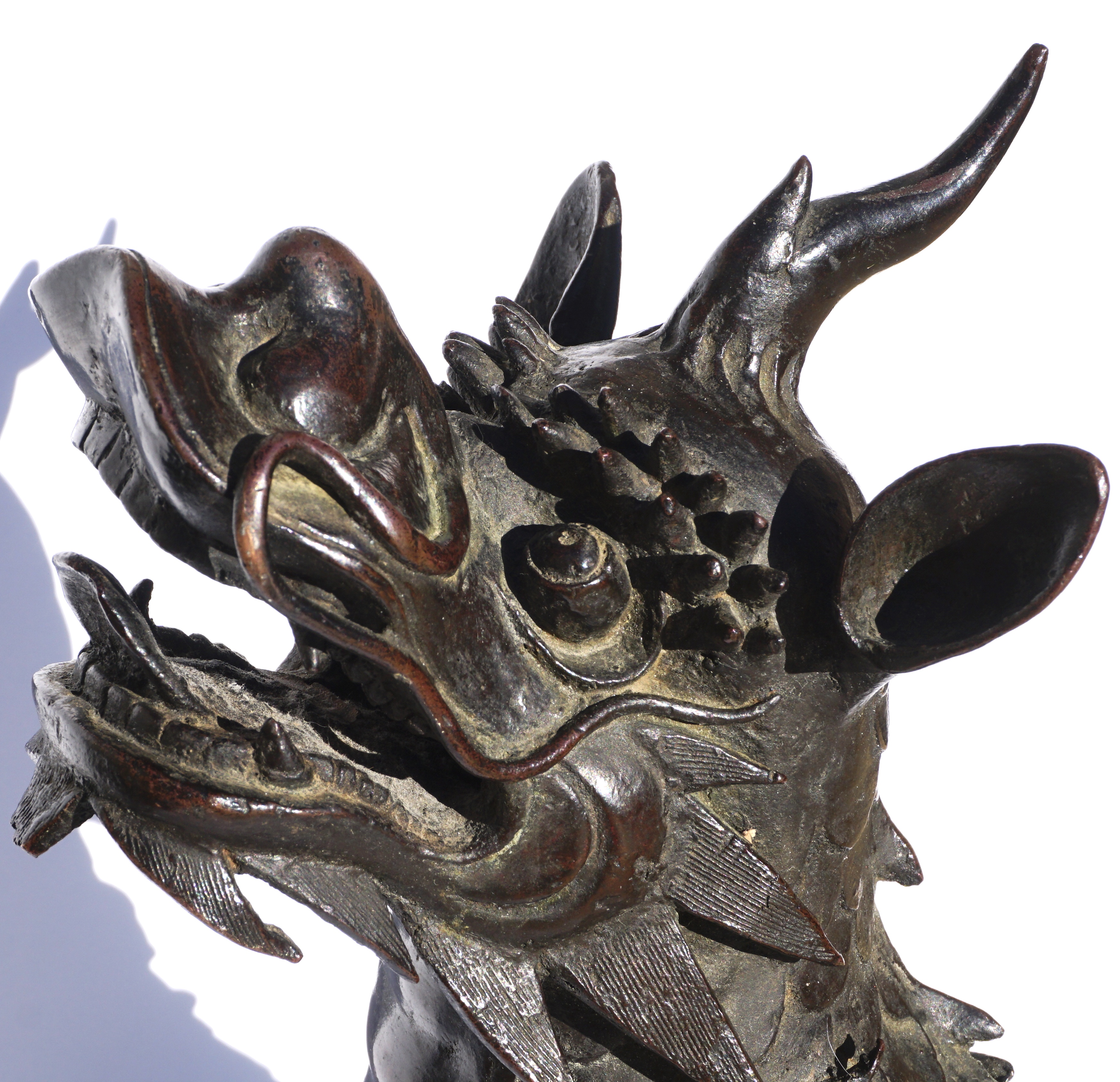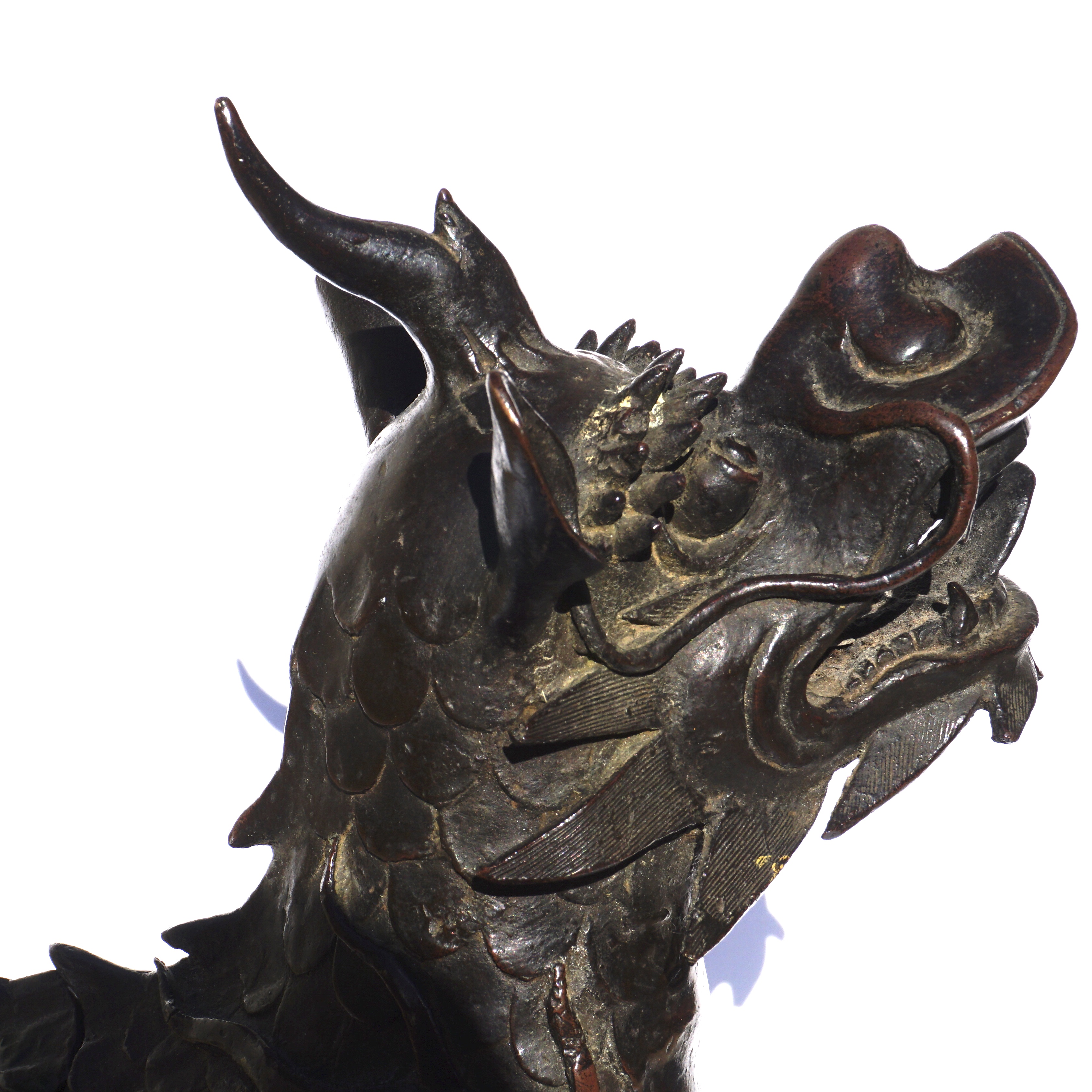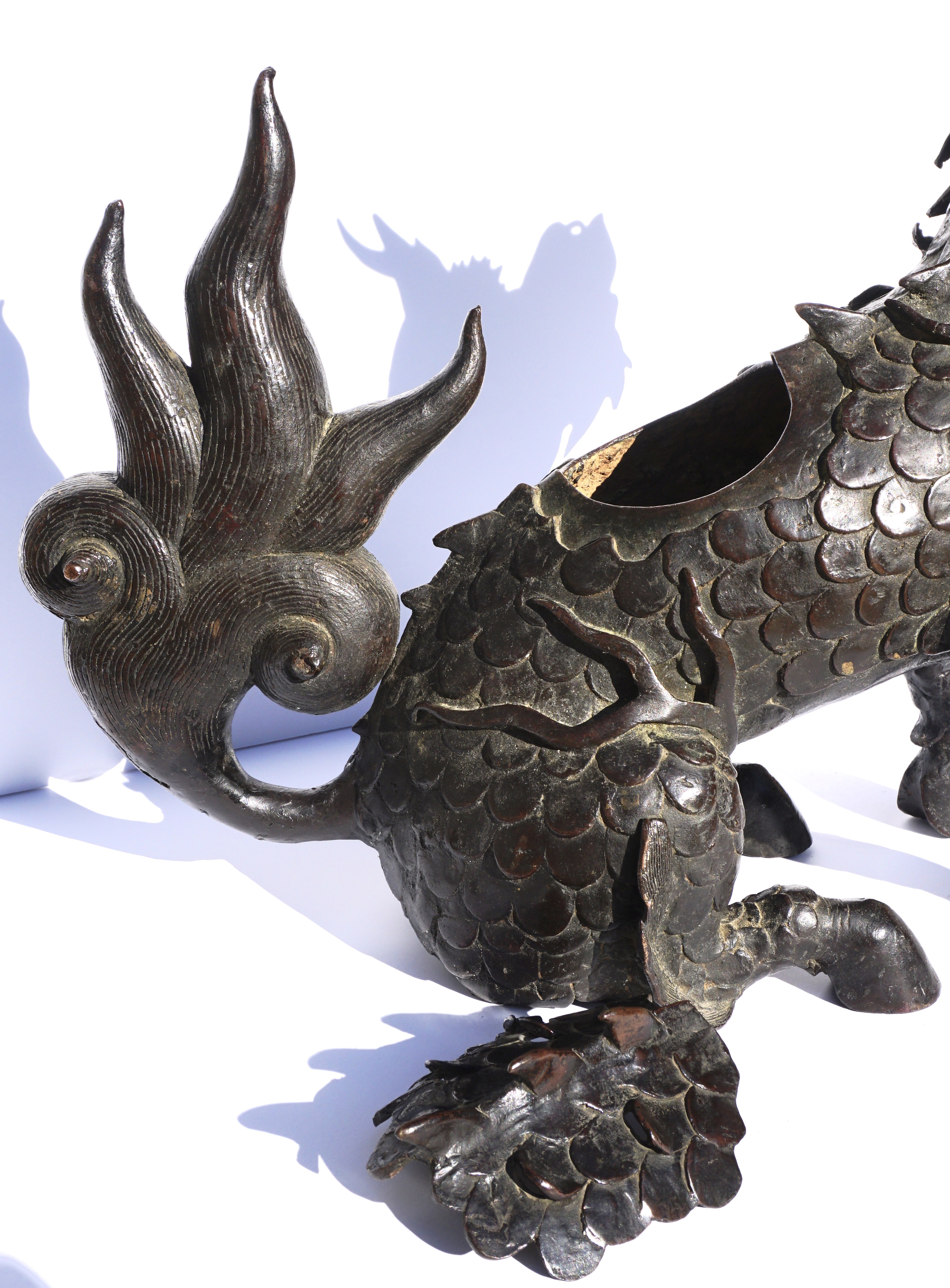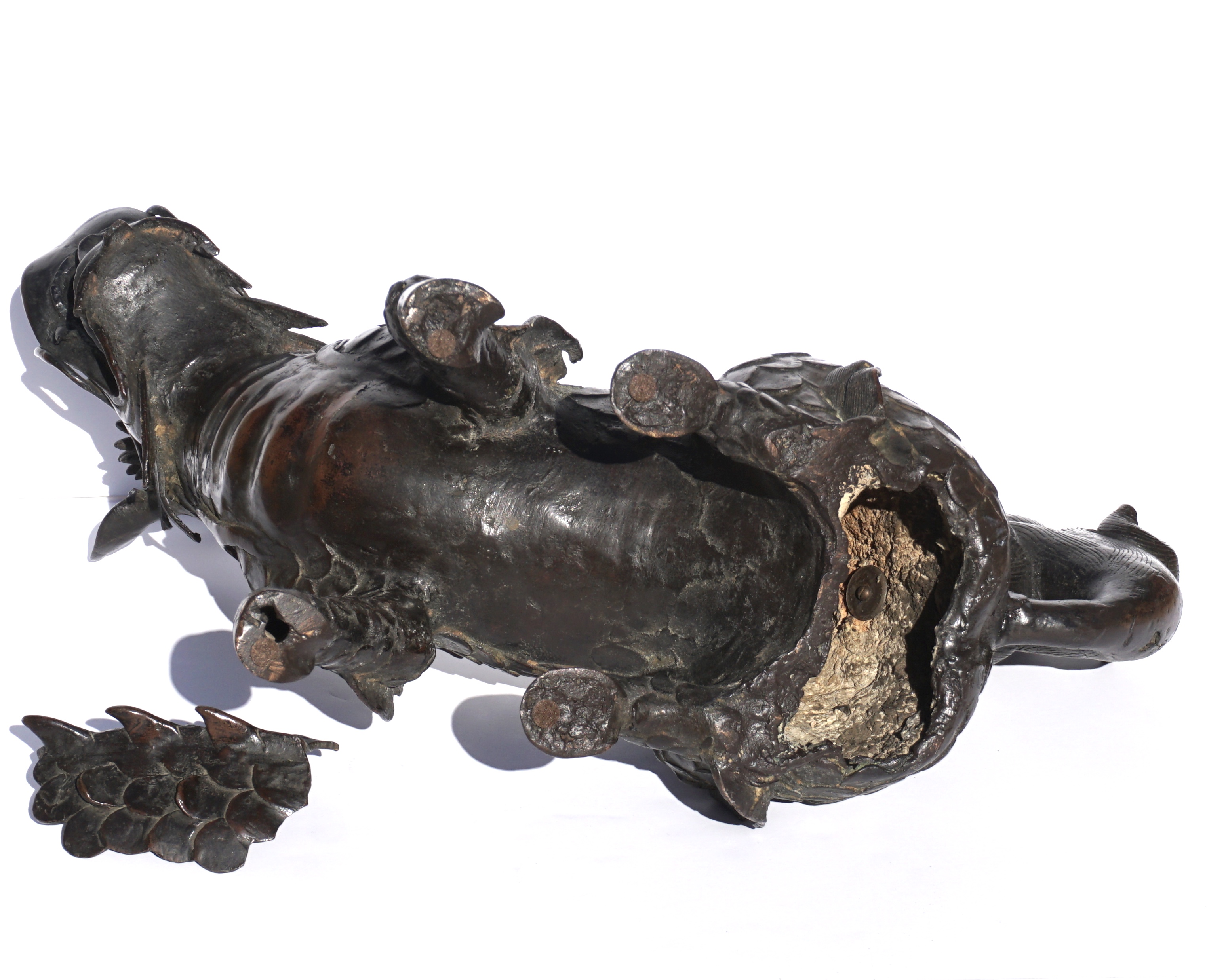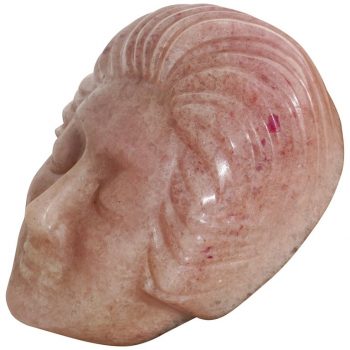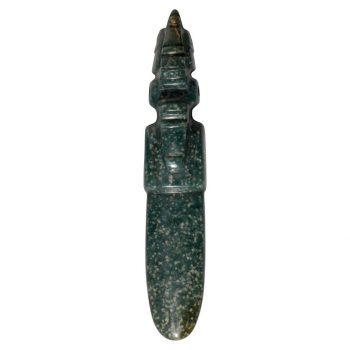Description
A large Chinese Ming bronze kyrin shape incense burner. Beautiful and decorative period Ming dynasty cast bronze of a scaled foo dog or mythical beast with horn, whiskers and teeth. The feet are hooves, its dragon head with a single horn and mouth Agape and the tail larger than life. Original scaled incense lid on back.
Dimensions: height 16.5 inches, length 20 inches, depth 7 inches.
Condition: Displays beautifully with losses and old repairs to one leg and tail. Wear commensurate of age and use.
The xiezhi (Chinese: ??) or haetae (Korean: ??, often spelled haitai or haechi) is a legendary creature in Chinese and Korean mythology.
According to the legend, Emperor Shun’s minister Gao Yao had a mythical creature called the zhi (?), which he used in criminal proceedings, whenever he was in doubt. The animal instinctively knew the innocent from the guilty; it butted the latter with its horn.
Mentions of the xiezhi in Chinese literature can be traced back to the Han Dynasty, where it is described by the scholar Yang Fu as a “passive aggressive righteous beast, which rams the wrongful party when it sees a fight, and bites the wrongful party when it hears an argument”. It is described in the Shuowen Jiezi as being “a strong beast with one horn, in ancient times. It settled disputes by directly ramming the party at fault”.
The xiezhi was used as a symbol of justice and law. The Censorate of the Ming and Qing eras, who were responsible for the monitoring of the civil service, wore the xiezhi as a badge of office. Similarly, military policemen of the Republic of China wear badges bearing the xiezhi, and it is engraved on the gavels in the law courts of the People’s Republic of China.

